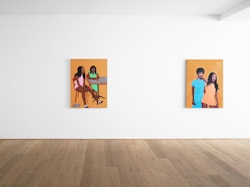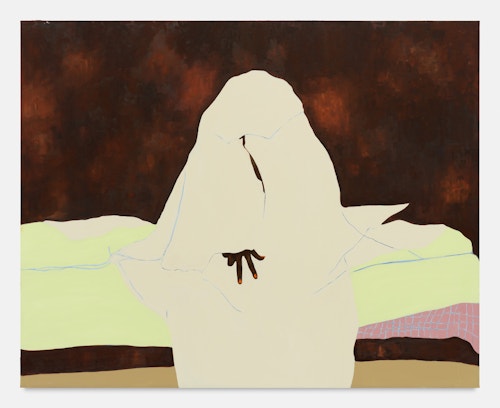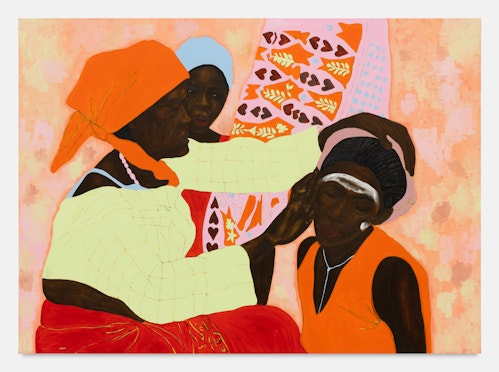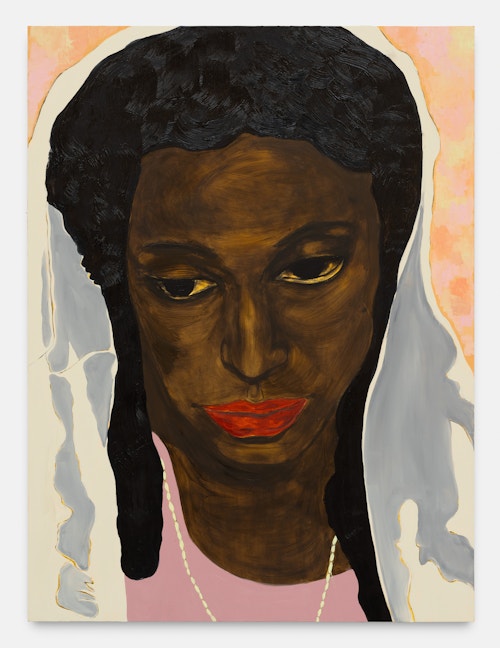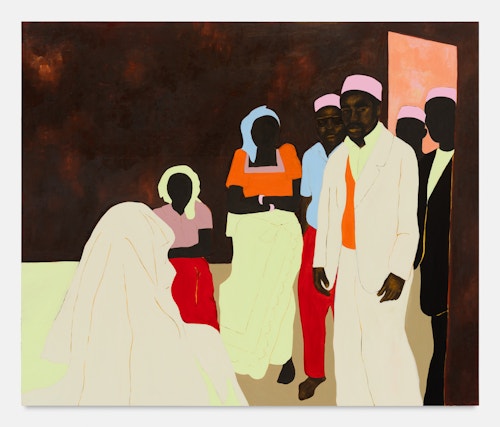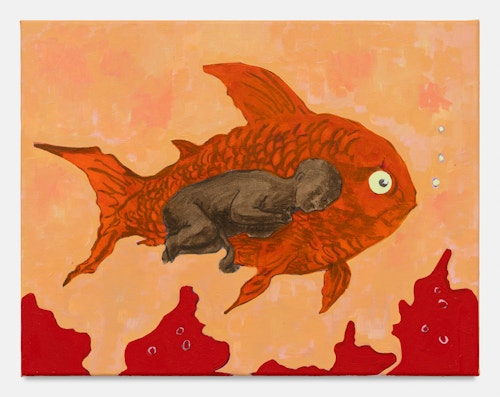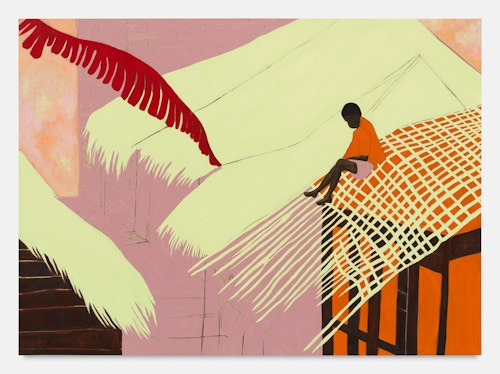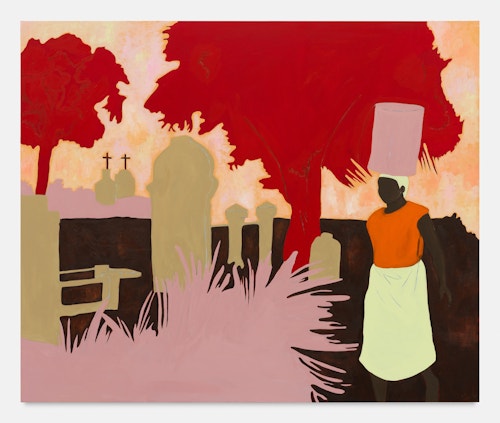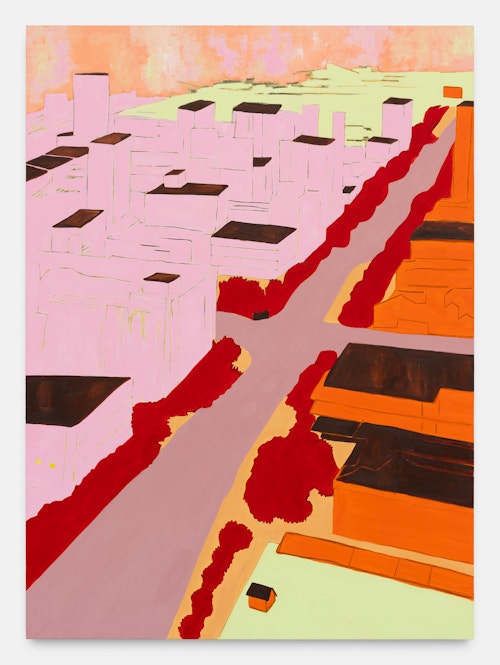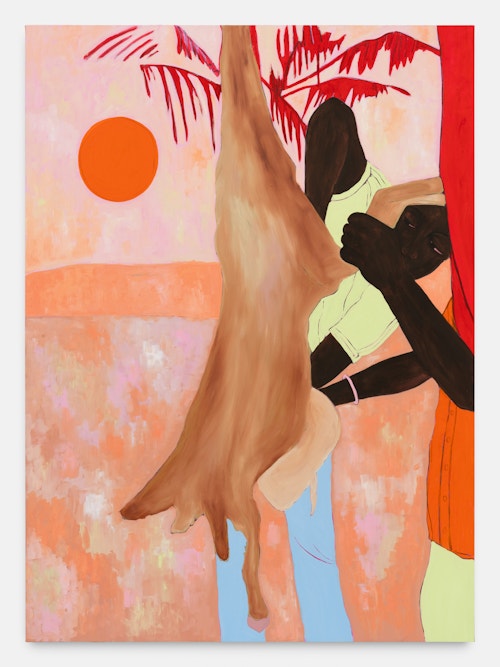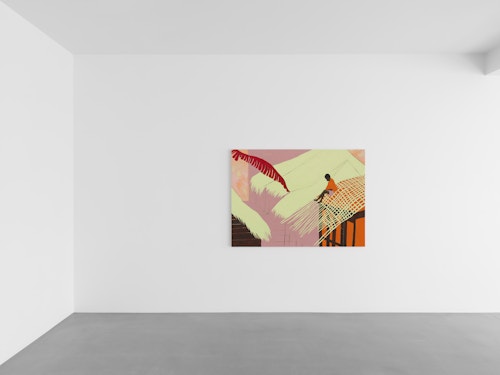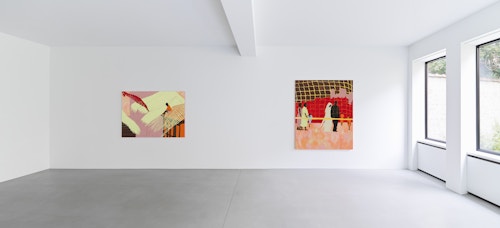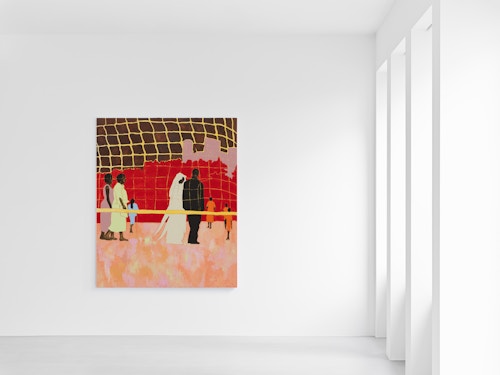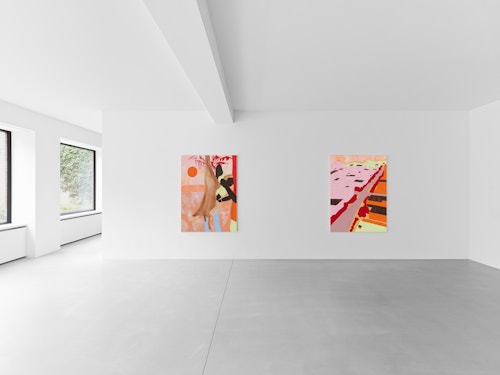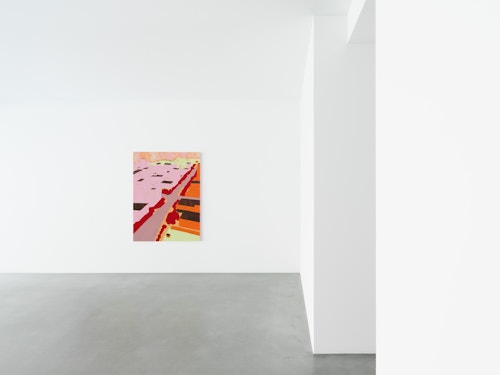
Cassi Namoda The Equator’s Forfeit
The works in The Equator’s Forfeit, Cassi Namoda’s second exhibition with the gallery, were painted in two locations, Europe and America. Informed by Namoda’s frequent and long visits to her country of birth, Mozambique, the works are rooted in personal experience, while reflecting broader historical and contemporary truths. Namoda’s dream-like paintings unfurl across time, continents, traditions and cultures, depicting pictures of enchantment and disenchantment, as well as of loss and restitution, in the Equatorial regions.
The title of the exhibition connects one of the most symbolic lines in the world, the notional division between the northern and southern hemispheres, to the idea of a forfeit: a penalty for wrongdoing; a price that has to be paid. It is a metaphorical allusion to the line no longer holding, and to the inescapable fact that patterns are changing. A shift set in motion by the repercussions of colonialism but exacerbated by the most urgent danger facing the global south today: climate change. Coastal cities, such as the Mozambican capital, Maputo, are especially vulnerable. The painting Mangito’s Way, which depicts a young boy repairing a traditional straw roof, reflects this theme. It is against this backdrop that the ten new paintings in The Equator’s Forfeit unfold.
Weaving in and out of the exhibition is the subject of marriage, as a ritual, rite of passage, as a state with both positive and negative associations. It is a lens through which Namoda contemplates the polarities of love and tradition in Luso African culture. Philosopher and writer John S. Mbiti (1931-2019) wrote that marriage, from an African perspective, “is the focus of existence. It is the point where all members of a given community meet: the departed, the living and those yet to be born. All the dimensions of time meet here and the whole drama of history is repeated, renewed, and revitalised.” In the painting The Latitude of Longing, the artist depicts a young girl receiving traditional Mozambican face paint, mussiro — a sign that she has reached marriageable age. While in a counterpart, The Longitude of Love, a newly-wed couple stroll along the sandy shores of Maputo Bay. The figure of a bride, dressed in white, also appears in the works Equidistant Tragedy, Equator’s Forfeit and Maria’s Zenith.
Maria is a familiar figure in Cassi Namoda’s work, both as a reference to the introduction of the Catholic faith to Mozambique by the Portuguese, but also as a metaphor for life in the post-colonial era. In her oeuvre, this recognisable figure, both real and other-worldly, expresses a range of emotions, from contentment to abhorrence and distress. For the artist, these feelings are all indicative of the aftermath of colonialism in Africa, as considered from a consciously female perspective. Meanwhile, works such as Arafah Gaza’s Arrival and Terrestrial Reckoning, with their references to birth and death respectively, complete the cycle of life.
Namoda’s palette evokes the atmosphere of the tropics and has evolved, in part, from the research she conducted during her recent residency at the Josef and Anni Albers Foundation. In these new paintings, colour harmonies and contrasts, such as warm/cool or bright/soft, are suggestive of sensory experiences. Colour is seen as energy, possessing the capacity to evoke sensations ranging from disturbance to tranquillity. The recurring dappled, pinkish-yellow backgrounds and net motifs (a reminder that lines can also cross or entrap), augments the formal cohesion of the works.
The paintings in The Equator’s Forfeit are evocative of a romantic sense of
impending loss and melancholy. Namoda’s imagery has a narrative quality,
although the scenes are more like suspended moments in time; contemporary
and recognisable, accessible and yet rooted in history and traditions. Moving
beyond simple depictions of everyday life in rural and urban Mozambique,
they bear witness to the emotional legacy of colonialism, to the myths and
stories that shape her homeland, and its history and future in an increasingly
globalised world.

Cassi Namoda (b. 1988, Maputo, Mozambique) currently lives and works in Italy. Born to a Mozambican mother and American father, she travels extensively and uses her work to explore the cultural dynamics that stem from her mixed heritage. Recent group exhibitions include ECHO. Wrapped in Memory, MoMu, Antwerp, Belgium (2023); The Art of Collecting Art, Salon Arents, Bruges, Belgium (2023) and Girls Girls Girls, Lismore Castle Arts, Co. Waterford, Ireland (2022). Her work can be seen this autumn at the Cranford collection, London (October 2024) and in a solo exhibition at the Norval Foundation, Cape Town (November 2024). Namoda’s work also features in When We See Us, a major survey exhibition exploring a century of Pan-African figurative painting that opens in Bozar, Brussels, in spring 2025 (previously shown at Zeitz Museum of Contemporary Art Africa, Cape Town, South Africa). She is participating in the Sharjah Biennale (Sharjah, UAE) in February 2025, and will take up a residency at the NESR Foundation (Luanda, Angola) in March-April 2025.

